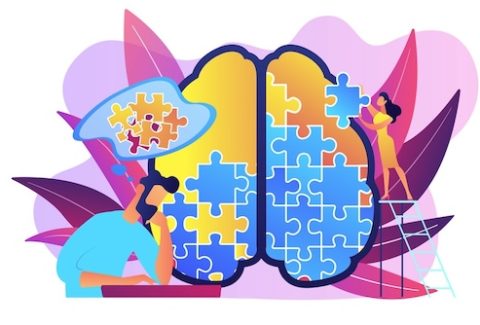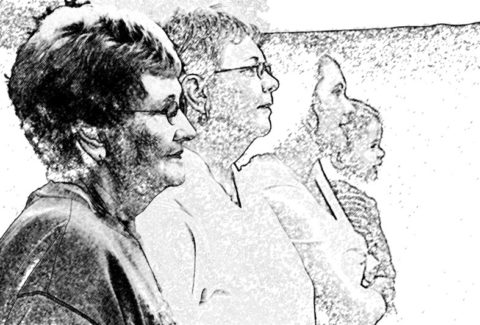The Transformative Power of Family Therapy
Introduction:
In the intricate tapestry of human relationships, family stands as a foundational thread, weaving the narrative of our lives. Yet, within the family dynamic, challenges can arise, giving birth to conflicts, miscommunications, and complex patterns. Enter family therapy, a profound and transformative approach that ventures beyond individual concerns, focusing on the collective heartbeat of the family unit. This article unravels the compelling story of family therapy—a journey toward harmony, resilience, and empowered connections.
Understanding the Family Ecosystem: A Systemic Lens
Family therapy, often referred to as systemic therapy, adopts a unique perspective—a systemic lens that views the family as an interconnected ecosystem[1]. It acknowledges that each family member plays a crucial role in shaping the collective experience. From parents to children, siblings to grandparents, the dynamics within this intricate web are explored to understand the complexities that contribute to the family’s unique identity.
Communication as the Pulse of Connection: Nurturing the Art of Dialogue
At the heart of family therapy lies the recognition that effective communication[2] is the pulse of healthy relationships. Therapists delve into communication patterns, identifying areas for improvement and guiding families toward more open, empathetic, and constructive dialogue. By nurturing the art of conversation, family members learn to express themselves authentically and listen with understanding, fostering a deeper connection.
Roles, Dynamics, and the Dance of Relationships: Unveiling the Family Opera
Family therapists act as skilled choreographers, decoding the intricate dance of roles and dynamics within the family opera. By understanding the unique contributions each member makes, therapists help families navigate power structures, expectations, and relational patterns. This unveiling is essential for fostering a balanced and harmonious family environment.[3]
Conflict as a Catalyst for Change: Reshaping Narratives
Conflict, often feared, becomes a catalyst for transformative change within the realm of family therapy. Therapists guide families in resolving disputes, managing disagreements, and utilizing conflicts as opportunities for growth. By reshaping narratives surrounding conflicts, families create stories of resilience, strength, and unity.[4]
Inclusivity in the Tapestry: Embracing Diversity and Unique Family Structures
Family therapy stands as an inclusive ally, embracing the diverse fabric of family structures. Whether traditional nuclear families, blended families[5], extended families[6], or LGBTQ+ families[7], the principles of family therapy adapt to meet the unique needs and challenges of each unit. Inclusivity becomes a cornerstone for fostering understanding and connection.
Interventions as Artful Brushes: Painting the Portrait of Change
Family therapists employ a palette of interventions to paint the portrait of change. From role-playing[8] exercises and communication games to genograms that visually map family relationships, these interventions act as artful brushes, crafting a canvas of transformation. Each stroke contributes to the creation of a more cohesive and resilient family portrait.
Conclusion: A Symphony of Resilience and Connection
In the symphony of family therapy, every instrument plays a vital role. As families embark on this transformative journey, they discover the power of resilience, the beauty of effective communication, and the strength that comes from understanding one another’s unique melodies. Family therapy is more than a therapeutic approach; it is a harmonious exploration of connection, a journey toward a resilient and empowered family narrative—one that resonates with the melody of love, support, and enduring connection.
What To Know and What You Can Do:
Family therapy emerged as a distinct field in the mid-20th century, gaining momentum in the 1950s and 1960s. Early pioneers such as Nathan Ackerman[9], Murray Bowen[10], Salvador Minuchin[11], and Carl Whitaker[12] contributed significantly to its development. They challenged the traditional individual-focused approach to therapy and introduced the idea of addressing familial dynamics and relationships as a means of facilitating psychological healing and growth. Since then, family therapy has evolved and diversified, encompassing various theoretical approaches and techniques to address a wide range of family issues and dynamics.
At SWEET, we believe that family therapy complements individual therapy rather than replacing it. However, we recognize that being informed about family therapy principles can significantly enhance an individual therapist’s effectiveness. Regardless of your therapeutic modality, consider acquiring fundamental skills in family therapy. Look for educational opportunities that offer courses in family therapy (SWEET’s upcoming Family Therapy Virtual Conference). If you encounter any challenges finding the right fit for your learning needs and style, don’t hesitate to reach out to us. We are committed to helping you find the optimal learning environment, tailored to your needs and fostering a supportive community as you continue your professional development journey.
[1] Bronfenbrenner, Urie. “Ecology of the family as a context for human development: Research perspectives.” Adolescents and their families (2013): 1-20.
[2] Galvin, Kathleen M., Dawn O. Braithwaite, and Carma L. Bylund. Family communication: Cohesion and change. Routledge, 2015.
[3] Becker, Carolyn V. The Impact of a Narrative Therapy Re-membering Conversation on Role Ambiguity in Stepfamilies. Texas Wesleyan University, 2019.
[4] Fleming, C. E., and M. I. Morrill. “Family conflict in couple and family therapy.” Encyclopedia of couple and family therapy (2017): 1-5.
[5] Greenberg, Lyn R. “Family Therapy with Separated and” Recombined” Families.” Family Advocate 46.1 (2023): 12-16.
[6] Lieberman, Stuart. “The ‘Extended Family’School of Family Therapy.” Developments in Family Therapy (Psychology Revivals). Routledge, 2014. 339-349.
[7] Nealy, Elijah C. “Working with LGBT families.” (2019).
[8] Browning, Scott, Jeanne S. Collins, and Bryan Nelson. “Creating families: A teaching technique for clinical training through role-playing.” The Craft of Teaching About Families. Routledge, 2013. 185-203.
[9] Braverman, Lois. “Ackerman Institute for the Family.” Encyclopedia of Couple and Family Therapy (2019): 20-23.
[10] Popovic, M. A. J. A. “Bowen family systems theory.” Marriage and family therapy: A practice-oriented approach (2019): 43-69.
[11] Reiter, Michael D. “Salvador Minuchin, MD: Innovator and Challenger.” Journal of Systemic Therapies 36.4 (2017): 16-22.
[12] Whitaker, Carl A. “The dynamics of the American family as deduced from 20 years of family therapy: The family unconscious.” Evolution Of Psychotherapy. Routledge, 2015. 75-90.









